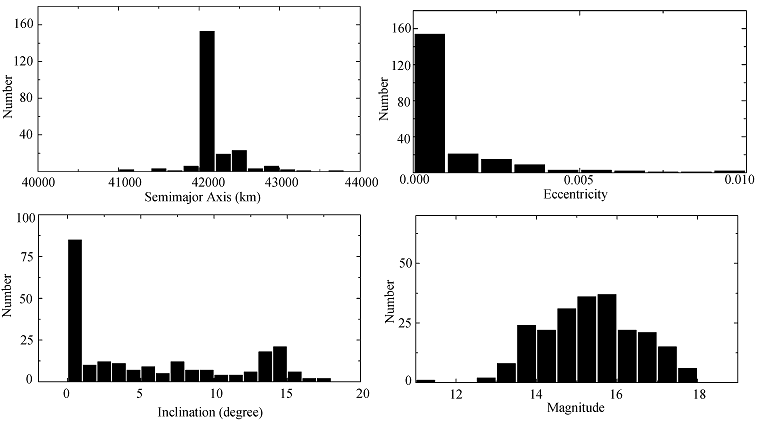Searching the space debris in GEO
2015-06-10Space debris is defined as man-made non-functional objects orbiting around the Earth, it has been recognized as a serious danger for operational spacecraft and manned spaceflight, and the growing population is becoming an increasing threat for some unique orbital environments, e.g. the GEO (Geosynchronous Earth Orbit) region. To improve the general knowledge of the space debris population, and better avoid the risk of collision, optical survey is an effective way to observe these objects. Surveys are performed utilizing a 50-cm refracting telescope and 310 fields in horizontal coordinate are observed. In data reduction, an advanced image processing pipeline is adopted to detect GEO objects automatically and improve the detection ability for faint objects. In detail, the mathematical morphology operator is adopted to eliminate noises and perform image restoration, then the median is used to eliminate the influences of field stars and increase the signal-noise-ratio of the faint objects, at last the object positions in continuous multiple frames are extracted with an efficient neigh-boor centering algorithm. Finally 282 tracklets are generated, corresponding to 229 correlated objects. The detail information of these objects is shown in the figure below.

Figure.1 The distribution of the semimajor axis, eccentricity, inclination and magnitude of the objects surveyed.
The work by Rong-Yu Sun, Jin-Wei Zhan, Chang-Yin Zhao and Xiao-Xiang Zhang has been published in Acta Astronautica. And this research is supported by the National Nature Science Foundation of China (Nos. 11125315,11403108 and 11273069).

 Search
Search

